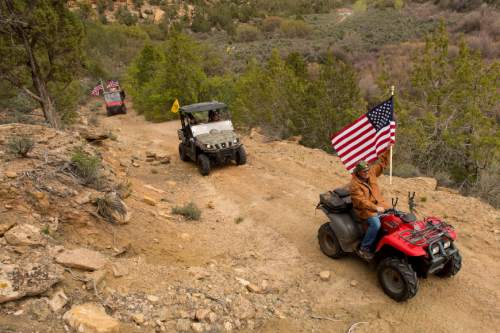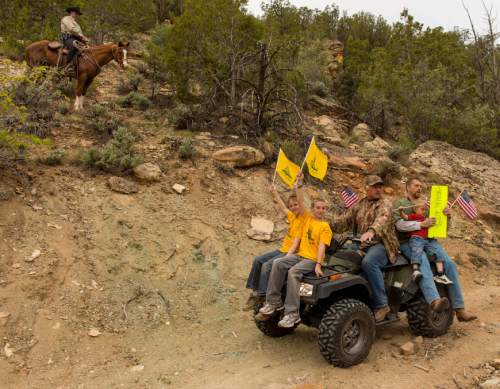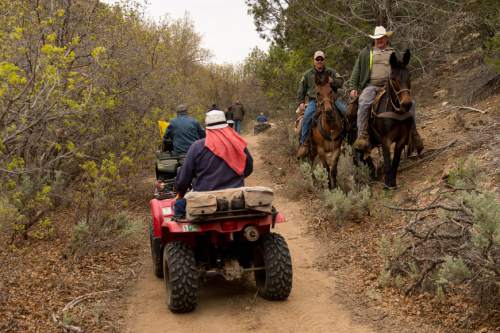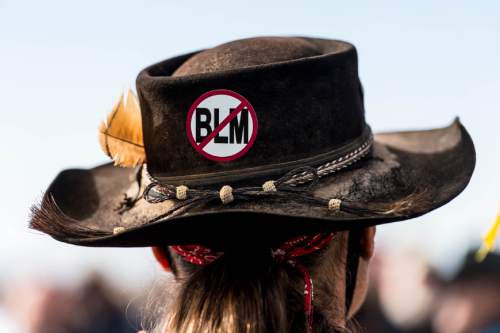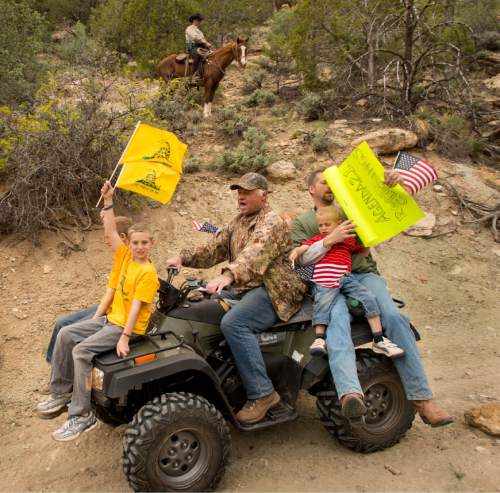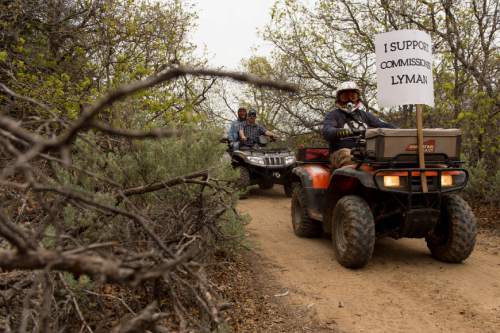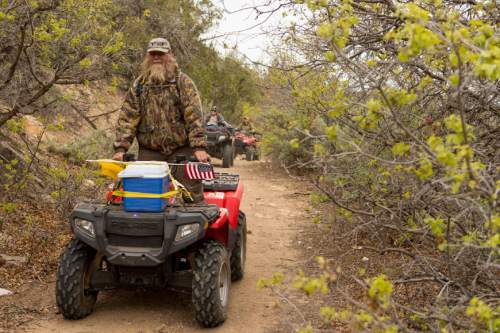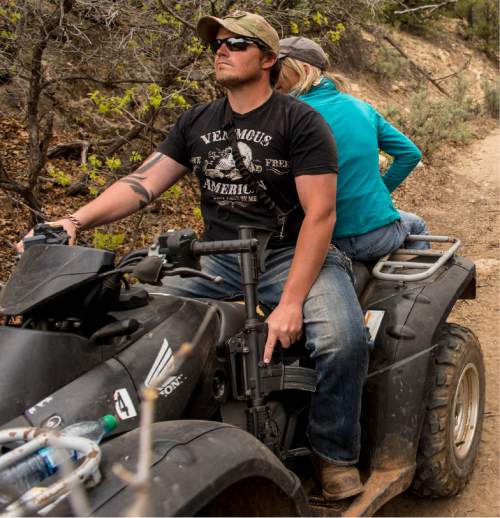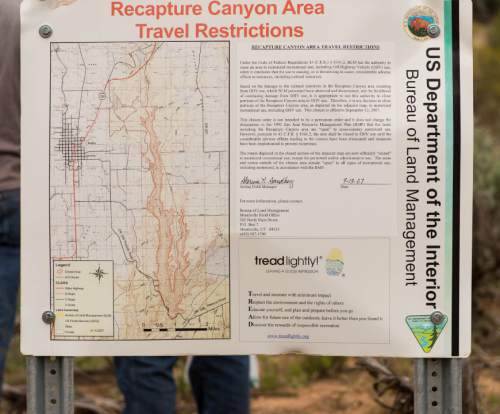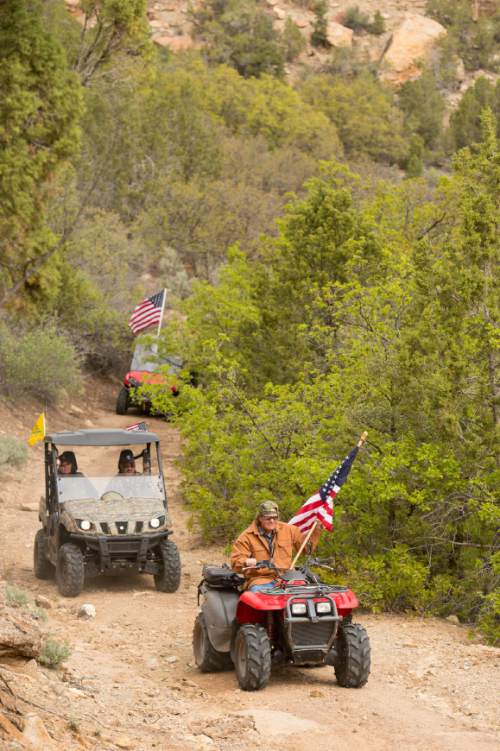This is an archived article that was published on sltrib.com in 2015, and information in the article may be outdated. It is provided only for personal research purposes and may not be reprinted.
Utah Attorney General Sean Reyes is the latest state official to wade into the political morass that has arisen from last year's protest ride into Recapture Canyon.
At the request of Gov. Gary Herbert, Reyes' staff is investigating whether the BLM acted legally when it excluded the public from riding motorized vehicles on a pipeline service road that enters the canyon east of Blanding.
BLM had closed part of the canyon to protect its delicate archaeological sites and riparian resources. The continued closure spurred San Juan County Commissioner Phil Lyman to lead a protest ride into the canyon in May 2014. He and Monte Wells, a Monticello-based blogger who promoted the ride, will be sentenced Sept. 15 for their convictions on federal misdemeanor charges of conspiracy and driving in an area closed to motorized use.
"We closed it for a reason. It had to do with continued degradation to the cultural resources, which are right next to or, in some cases, right under the trail," said BLM spokeswoman Megan Crandall. "Here we are a year later squabbling about whether a pipeline right-of-way is a road. Wouldn't what matters be the sacred cultural sites in that canyon?"
But Rep. Mike Noel, R-Kanab, claims to have documents that prove the BLM had no authority to close the road along the pipeline. If that is the case, Lyman is actually innocent of the federal charges, Noel said at a legislative meeting Thursday.
"If this is a case that doesn't try to protect the interests of the people of the state of Utah, I don't know what is," said Noel, who wants the state to cover Lyman's defense and appeal costs.
Assistant Attorney General Tony Rampton said his office's inquiry will address two questions: whether the 2-mile pipeline road should be included in the state's lawsuits to gain title to 12,500 BLM roads under the Civil War-era statute RS2477; and whether BLM closed this road illegally.
"We can't be involved in (Lyman's) defense, legally and ethically. We aren't directed to come up with any kind of conclusion," said Rampton. "What people do with what we find, I don't know. It's not part of a defense strategy."
Years ago the state had reviewed the pipeline right-of-way and pared it from the list of roads to sue over, according to Rampton, who plans to personally visit the site in the coming weeks.
Prior to Lyman's trial, U.S. District Judge Robert Shelby concluded the canyon had been closed properly. Defense lawyers did not object to a prosecution motion barring them from claiming at trial that the canyon was a RS2477 right-of-way and that the closure was invalid.
Herbert spokeswoman Aimee Edwards also made it clear the governor is not attempting to divert state resources to Lyman's defense, although Herbert has pledged to send Lyman $10,000 from his campaign coffers.
"Our office was not supportive of him breaking the law. We are just looking to get (to) the issue of whether the closure of the road was legal," Edwards said.
The road in question is gated near U.S. Highway 191 and follows a right-of-way BLM granted to the local water district in 1981 to service a pipeline that runs down the canyon below Recapture Dam. The BLM closure starts about one mile in and the road dead-ends after another mile at a turnaround below Anasazi cliff dwellings.
"It is not a right-of-way for recreational vehicles to use to cross into a closed area," Crandall said. "We at BLM have a responsibility to uphold our mandate to manage these lands for multiple use. That doesn't mean every use on every acre. We made a decision to restrict part of the canyon to foot and horse traffic. We stand by that decision."
While Lyman did confine his ride to the pipeline road, many protesters, including his three codefendants, chose not to, according to evidence at their trial this spring.
Witness Josh Ewing estimated 40 of the 50 ATVs in the canyon that day continued past the end of pipeline. They drove a few miles down Recapture and exited at Brown's Canyon, trampling willows and sagebrush along the way.
These riders followed a trail the BLM says was illegally constructed and prompted the canyon's closure in 2007.


